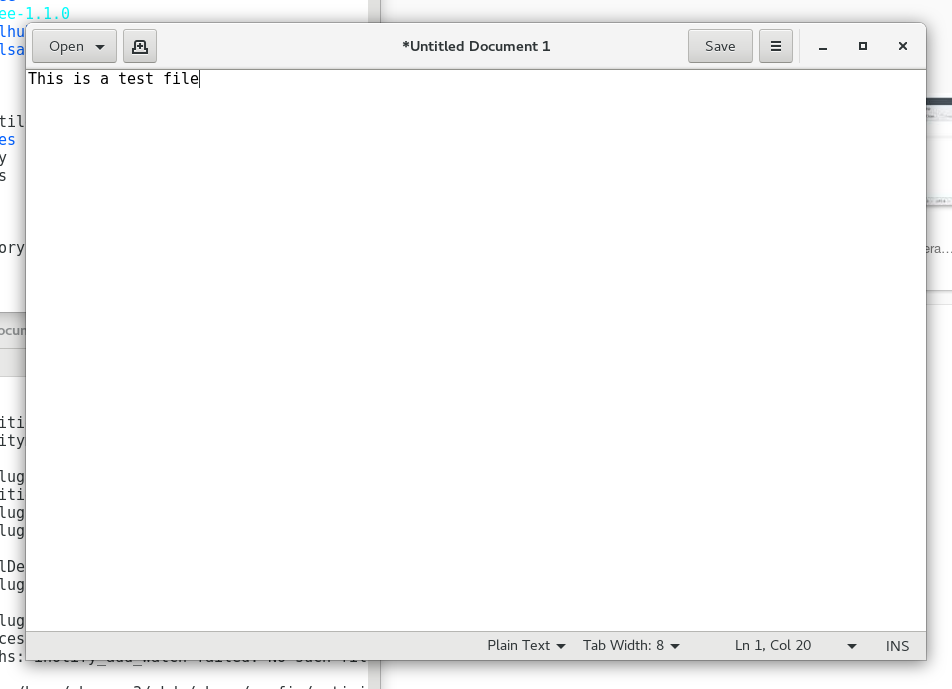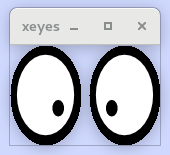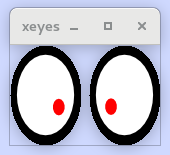3. Refresher for Linux¶
These instructions are a stripped-down version of those from The Linux command line, designed to refesh the memory of those who have previously used the Linux command line. If you’ve recently run through The Linux command line, you can skip this page. If this page moves too quickly, return to The Linux command line to run through this in more detail.
3.1. The Linux terminal¶
Recall that Linux has both a graphical interface, similar to those you’ll be sued with Windows or Mac operating systems, but also a more powerful text interface. We call this text interface the ‘terminal’
How to open the terminal depends on your Linux distribution. You’ll usually find the terminal at Applications -> System Tools -> Terminal. Or, right click the Desktop and there is usually a shortcut to open a terminal window.
The terminal window will look something like this:

The terminal shows your username (in my case, sbowers3), the name of the computer you’re connected to (mein), the directory you’re in (~) and has a space for you to type commands (□).
Recall that you can type commands into the terminal, and execute them with the return key. For instance, type echo Hello World! into ther terminal, and execute it:
[username@linuxpc ~] echo Hello World!
Hello World!
The echo command is very simple, it prints text to the terminal. There exist a large number of command line tools within Linux, take a look at some of these and try out a few that you think might be useful.
3.3. Making and moving files¶
3.3.1. Manipulating files¶
First, we’ll make a test file to play with using the command touch:
[username@linuxpc ~] cd ~
[username@linuxpc ~] touch file1
[username@linuxpc ~] ls
...
file1
...
We can also make a new directory using the command mkdir (make directory):
[username@linuxpc ~] mkdir directory1
[username@linuxpc ~] ls
...
directory1
file1
...
We can move our file into the directory using the mv command:
[username@linuxpc ~] mv file1 directory1
Change directory to directory1 and verify that file1 is there.
We can use the cp command to copy a file:
[username@linuxpc directory1] cp file1 file2
[username@linuxpc directory1] ls
file1
file2
Files can be deleted with the rm (remove) command:
[username@linuxpc directory1] rm file2
We can run similar commands to cp and rm entire directories. Note in these cases we need to use the -r flag, which stands for recursive. This means perform the command on the directory and all its contents:
[username@linuxpc directory1] cd ..
[username@linuxpc ~] cp -r directory1 directory2
[username@linuxpc ~] rm -r directory2
3.3.2. Creating a text file¶
We can launch programs from the command line. A common example of this will be to create text files. There exist a lot of text editors for this purpoes (e.g. vim, emacs, kate), here we’ll use gedit. Use gedit to create a new file called newfile.txt and save it to the home directory. Close gedit when you’re done.:
[username@linuxpc ~] gedit

To edit newfile.txt in gedit, you can call gedit with the filename::
[username@linuxpc ~] gedit newfile.txt
3.3.3. Changing file permissions¶
Recall that you can use ls -l to view file permissions. Imagine we wanted to give other users permission to read our text file. For this we can use the command chmod (change mode).
To use chmod we need to specify three options relating to (i) what person or group, (ii) whether the permission should be added or removed, and (iii) which permission should be changed. These are encoded as:
| Who? | What? | Which? |
|---|---|---|
| u = owner | + add permission | r = read |
| g = group | - remove permission | w = write |
| o = others | x = execute | |
| a = all |
For example, to give other users permisson to read our file:
[username@linuxpc ~] chmod o+r newfile.txt
In this case o refers to others, + to add the specified mode, and r to read-access.
3.4. Running programs¶
The command line can be used to execute commands or scripts. You’ve already run a few commands from the command line (ls, pwd, gedit, chmod, cat), so you already know how to eecute programs
3.4.1. Simple programs¶
Some simple programs can be executed with a single word. What do the following programs do?:
[username@linuxpc ~] whoami
[username@linuxpc ~] fortune
[username@linuxpc ~] xeyes
3.4.2. Programs with options¶
Lots of programs have options, which we can modify with --flags.
Let’s take the xeyes program as an example. By default, xeyes operates as follows:
[username@linuxpc ~] xeyes

We can change the colour of the eyes using -fg (foreground colour) and choosing a colour:
[username@linuxpc ~] xeyes -fg green

Flags are a very common way of specifying input options. There is a command called man (manual). We can use it to get help for most command line programs. For the example of xeyes:
[username@linuxpc ~] man xeyes
XEYES(1) General Commands Manual XEYES(1)
NAME
xeyes - a follow the mouse X demo
SYNOPSIS
xeyes [-option ...]
DESCRIPTION
Xeyes watches what you do and reports to the Boss.
OPTIONS
-fg foreground color
choose a different color for the pupil of the eyes.
-bg background color
choose a different color for the background.
-outline outline color
choose a different color for the outline of the eyes.
-center center color
choose a different color for the center of the eyes.
...
Try some of these options to remind yourself how flags work.
3.5. Shortcuts and tricks¶
3.5.1. Wildcards¶
Often we will want to refer to multiple filenames or directories. We do this with the wildcard symbols * and ?. The ? a single character, and the * symbol refers or zero or more characters.
For example, we might want to list everything beginning with D in the home directory:
[username@linuxpc ~] ls -l D*
drwxr-xr-x 4 username username 4.0K Sep 7 11:32 Desktop
drwxr-xr-x 12 username username 4.0K Sep 12 11:35 Documents
drwxr-xr-x 9 username username 12K Sep 13 13:14 Downloads
We’ll return to using wildcard symbols later.
3.5.2. Auto complete¶
We can use the tab key to auto complete commmands in the terminal. For example, if we wanted to cd to the Documents directory we could start with:
[username@linuxpc ~] cd Doc
… hit tab, and as there are no other directories fitting that pattern, the field will autofill to Documents:
[username@linuxpc ~] cd Documents/
Where there is more than one possible program, directory, or files, the tab key will display possible options:
[username@linuxpc ~] cd Do
Documents/ Downloads/
Fill in more letters and press tab again to proceed.
You’ll find that use of the tab key to auto complete will speed up navigation around the command line substantially.
3.5.3. Get previous commands¶
You can use the up key to scroll through a command history. This will save you having to re-type out commands repeatedley. Once you find the command you’re looking for, you can edit it with the left and right keys. Give it a try!
3.6. Summary¶
We learned how to use the following commands. There are many thousands of other commands in Linux which you’ll learn over time, but these are the main commands you’ll need to navigate and manipulate files on the command line.
echo: Print to the terminalpwd: Print working directory.ls: List contents of working directorycd: Change directorymkdir: Make directorymv: Movecp: Copyrm: Removechmod: Change file permissionsgedit: Create a text file in the gedit editorman: View manualssh: Connect to another PC



